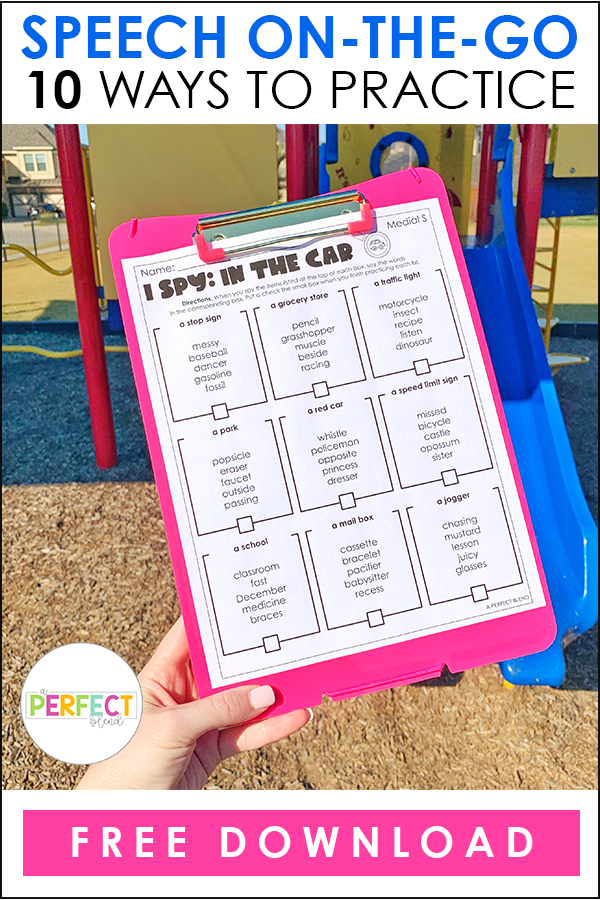Practice! If a basketball player wants to perfect his or her shot, they practice the same way over and over until their muscle memorizes the form. I often use this analogy with my students to encourage them to practice their articulation and language strategies over and over even OUTSIDE the speech room. Speech practice at home is important to generalizing skills.
“Mrs. Newsome, I don’t have time to practice. I have baseball practice and so much math homework.” When I hear this, I tell them that they can easily practice in the car while driving to baseball practice. Also, you can practice at the grocery store, at school, on a family trip…anywhere!

10 Ways to Practice Speech On-The-Go
Here are 10 ways you can encourage parents to practice their child’s language and articulation skills on-the-go! Speech practice to home made easy!
SEQUENCING: Prompt your child to sequence the events for the day by using transition words. For instance, “first, we will go to the library. Then, we will go to the park.” In addition, you can sequence the event before pulling out of the driveway.
COMPARING AND CONTRASTING: Practice identifying similarities and differences between 2 vehicles or houses. For instance, “that house has a red door and this house has a brown door. Similarly, both houses have windows.”
VOCABULARY: You can also discuss new vocabulary words like: construction, intersection, traffic, pedestrian, engine and more!
FOLLOWING DIRECTIONS: At each red light, give your child a 2-step direction to follow. For example, “clap your hands, then touch your nose.”
RECALLING EVENTS: After leaving school, prompt your child to recall events from their day, even if it is as simple as, “Tell me about your favorite part of the day.” If your child responds with one word, “recess,” encourage them to elaborate.
DESCRIBING: Practice describing the items that you see on the way to your destination by playing “I Spy.” You can encourage your child to tell you the category, function, parts, etc. Also, you can describe an object and have your child guess the object.
CATEGORIZING: Encourage your child to list items in the category you name (i.e., transportation, restaurants, plants, thing you see at the park, things in the sky, etc.)
FIGURATIVE LANGUAGE: As you’re listening to music on the radio, discuss the figurative language that you hear in the songs.
WH-QUESTIONS: Ask your child a variety of wh- questions (who, what, when, where, why) and encourage them to ask you questions about your day. For example, “Who did you play with at recess? What did you eat for lunch? When is your library book due?”
ARTICULATION: You can also create a sound book. Help your child make a book of words and pictures that contain his/her target sound. For example, put one target word on each page and review the book while driving to school or the grocery store.

I created a fun resource to practice articulation on-the-go is with “I Spy” pages. This resource is designed to help make speech practice at home and carry-over easy! As students locate the items in the community, they say the words in the box. You can check it out in my TPT store here: I SPY: Speech On-the-Go.
Also, here is a single-page printable freebie that has 5 of these on-the-go practice activities for parents. I will send the form directly to your email.

